Adi Cohen, themarker.com
The national move to copy the Haifa Bay Enterprises has recently received a significant boost: The Israel Land Authority (the Israeli lands) and the Ramat Negev Regional Council plan to establish a petrochemical industry zone in the area of Oron in the south of the country – so it was known to themarker. The complex, located near Yeruham and Dimona (11 and 17 km, respectively) in the regional councils of the area of the Negev and the middle Arava, spans 24 thousand dunams and is used primarily for mining and quarrying.
The plan to copy the activity of the factories and refineries from Haifa to the Oron compound is now on the field of the South district committee, which was ordered a few weeks ago to the Environmental protection Ministry to perform an environmental report for examining the program. Alongside this, a few months ago a steering committee was established to examine the applicability of the move in this compound. After the stages of examination and planning that are expected to take a few months, if the Oron compound is suitable by all the factors, the program will be brought to the government to decide on its implementation.
The huge plan stretches around the Oron factory between the great crater, the Golchen River and Mount vehicle. It comprises about 10,000 dunams to be allocated for the benefit of a heavy industry – of which 3,000 dunams will be used in favor of the activity of petrochemical enterprises; 2,000 dunams for chemical plants; 600 additional dunams of energy production facilities; And 3,800 to other industrial factories. The remainder of the land (about 14 thousand dunams) is intended for administration buildings and logistic infrastructures and transport, such as railroad, cargo terminal and storage space.
Rafi Elmalih, head of the Senior Planning Division, and who heads the team that promotes the planning of the Oron industrial zone on behalf of the authority, says that "the program has developed in our activities to evacuate and develop the Haifa Bay, and a multi-demand for compounds of such magnitude for industrial purposes." The selection was made after we performed an environmental, economic and infrastructural examination.
Elmalih adds that "in the area of the Oron factories there is now an outline plan that provides the area for quarrying and quarrying plants as well as a thermal treatment facility." In fact, this is an extension of the plan that exists on the ground that will enable the construction of heavy industrial enterprises in large areas and refineries. If it is necessary to carry on the action of ORL and not close it only to its absence, it can be transported to this area. The objective is to create a copy potential for the Haifa Gulf plants or some of them.
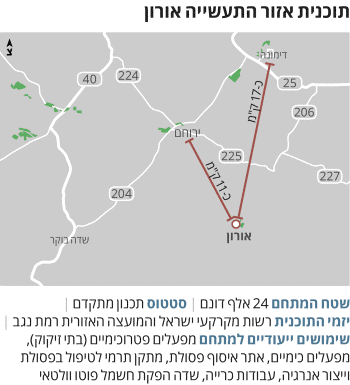
The Oron compound is the main alternative to Haifa Bay factories, although there are two other major industrial complexes: a chemical industry complex in Mishor Rotem, and the bromine industries complex, which operates in Neot Hovav. Both were examined as an alternative to the Haifa Bay factories – but from conversations with officials on the subject indicate that the land reserves are not satisfactory, and that both are more adjacent to populated areas, which will be harmed by the transfer of industrial activity to their fields.
Elmaliah notes in this context that "our test has indicated that there is economic feasibility and planning for the move." Advancing the Oron compound will result in the maximum utilization of existing infrastructures, including railways, gas and electricity. In addition, the program will provide a significant economic response to localities in the region with the addition of income to local authorities and employment places for residents, and in parallel will contribute to a wide evacuation of areas in the center of the state.
Strengthen the Periphery
Apart from the environmental aspects of the factories, alongside population centers in Haifa Bay, one of the main considerations today for the evacuation of the factories is the land value of the Haifa Bay, and the economic feasibility of clearing it for the economy and the housing market. According to our estimates, the report conducted by the consulting company from Kinzi for the National Economic Council can be marketed in the twenty years following the evacuation of the factories. 100-50 thousand housing units in Haifa Bay. The property's value is estimated at 11.2-7.5 billion shekels.
The Israel Lands Authority believes that the copying of the Haifa Bay Enterprises to the Negev also has the potential to strengthen the periphery in the economic-social aspect-with a valued supplement of 9,400 jobs.
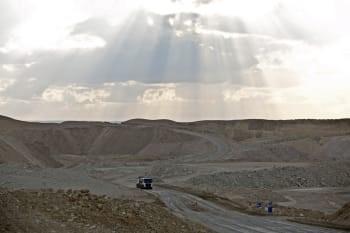
The area designated for industrial zone Oron Photography: Ofer Vaknin
Shai Takhgai, the Society for the Protection of nature: "The plan is disastrous to space." It is difficult to understand the decision to convey to the land of craters, from the beautiful areas in Israel, the mazamt industry of the Gulfof Haifa.
However, the Ministry of Environmental Protection indicates that the report of the Kinzi has found that there is no economic feasibility in the course of depreciation in the activities of the expected refineries over the years: "The initiative to establish an alternative location for the petrochemical industry of the Haifa Bay does not coincide with governmental policy and the movements used by the Ministry of Environmental Protection and the Ministry of Energy to reduce the use of fossil fuels and vehicles that prevent petroleum oil.
"The initiative for transporting the Haifa Bay Enterprises to the proposed area does not match the findings of the Kinzi report, which points to the island – the economic feasibility of copying the refinery due to the decline in demand for petroleum oil, and in fact there is an expectation that from 2025 the profitability (+ 0.31% 161.3) is expected to descend."
Apart from this report, which has never been publicly published, it seems that the move is also supported by the National Economic Council, which has conducted several tests on the feasibility and economic feasibility of the move.
In parallel to the search for the alternative to copying the factories, in the past year the Israel Land Authority had a national plan for Haifa Bay, where the Minister of Finance was also involved, Moshe as a window. The plan seeks to evacuate the factories from the Bay Area and redesign the entire area, which extends about 36.5 thousand dunams. According to the plan, its details were introduced in March, planning and coordinating the project will be carried out in 2025-2019, while the soil and groundwater cleaning will begin according to the timetable in 2032-2022, at a valued cost of NIS 1.5 billion. According to this timetable, the marketing of land in Haifa Bay will be begun in 2025.
As a window he addressed in March to this program and said, "he may need to have a curator from Haifa that he and his family can smell what is happening here to understand why the city is stuck." If a company should invest in Haifa today, she will not want to come to this place. The media talks only about morbidity, infections and mortality in the city. "No one wants to come here, we have to tell the truth."
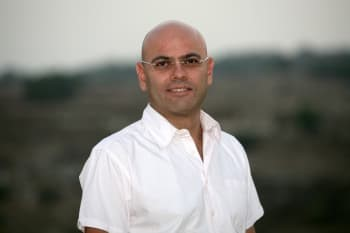
Rafi Elmalih, Director of Senior Division, Photography: Ofer Vaknin
The Ministry of Environmental Protection is move.
The Oron compound has been used for the past 70 years for the mining of phosphates and quarrying. The activity in the compound is currently being given to the company, including Rotem, a subsidiary of the container Group (-0.37% 1612), which was created from a merger that took place in 1991 between phosphate companies in the Negev, Rotem Fertilizers and the Ampert group. The land of the compound is considered to be violated its use has resulted in damage to its structure and quality – and therefore its use is limited. Within the framework of the program, it is proposed to change the ground purpose of mining, chemical and petrochemical industries, security industries, waste management and energy production, as well as for supporting infrastructures – such as railway terminals and warehouses.
However, beyond economic and real estate issues, the plan also inspires a lack of protection among bodies dealing with the field of nature. The Oron compound is located near the large crater, defined by these bodies as having a high-environmental landscape, and it is evident that the Ministry of Environmental Protection and environmental organizations are move. The Ministry of Environmental Protection was completed in November the consolidation of the directives document for the report.
The firm also wishes to examine the determination of a heavy industry area in this area, noting that "the industrial zone of the Oron Valley is designed in the heart of the craters and the main landscapes, at the border of the Great crater nature Reserve and two earthly ecological corridors, alongside the rowing ribs and near a variety of hiking and campgrounds. Beyond the harm to the open areas and in the early landscapes, the establishment of a new industrial zone will require a large resource investment to establish new infrastructures – instead of utilizing existing infrastructures. This will cause the restrictions and environmental impacts in other sensitive areas that lead to the area.
The Environmental protection Ministry's position is also supported by the Society for the Protection of nature. Shai Takhhai, a preservation and environmental protection Center in the Southern District of the Teva Nature Society, said that "the program is located in the heart of a hiking and nature area." This is a sensitive and important area, and the plan was disastrous to the Negev. It is difficult to understand the decision to take the land of craters, from the beautiful areas in Israel, and to convey the mazamt industry of the Gulf of Haifa. The only reason I can speculate is the search of the Regional Council and other local authorities in the area for additional income sources.
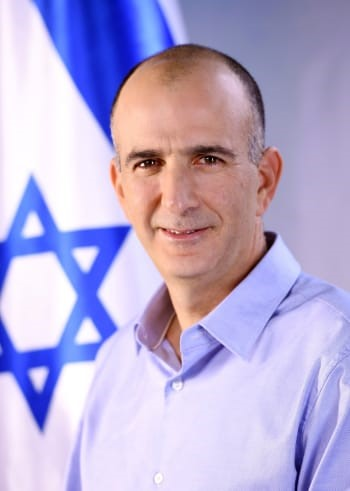
Guy Samet Photo: Haim Zach/Me
Uzi Havshosh, director of the economic company of the Ramat Negev Regional Council: "This is the first time to have a real alternative to Haifa Bay – not Cosmetic solutions"
"A necessary national move"
On the other hand, Eran Doron, the head of the Ramat Negev Regional Council, believes that this is a necessary national move, which may also yield necessary income to strengthen the authorities in the area: "If there is a place in Israel that has the feasibility of copying ORL – this is Oron." Away from the population, near a train and close enough to the Eilat-Ashkelon pipeline. There is currently no area in Israel that knows how to provide land reserves for industries that need extensive space. But in Oron it is possible. There is a bad image for heavy industry and chemical industry, and I can understand that. We all want to work in organic and environmental places. But what to do, in modern lifestyle, it is necessary to have a heavy industry and chemical industry. We all use medicine, fertilizers and shampoo. These are things that need to be manufactured and needed for a place.
Director of the economic company of the Ramat Negev Regional Council, Uzi Havshosh, said in a conversation with the marker that "this is the first time a real alternative to Haifa Bay – not cosmetic solutions. The idea is to use the broken territories, and instead of restoring them – to be usable by them and developing them as industrial zones for national-needs projects. It is worthwhile to learn a lesson from the Haifa Bay event and to remove the Mahamimot industries and the uses of the petrochemical-public receptors.
He claimed that there were no alternatives to the copying of the factories, except for the Negev: "There is no longer a land brigade disturbed in this magnitude of 130 thousand dunams, far enough from existing communities." The logic points to the Rotem plane, and its compounds the Oron and Zin – where it has all the infrastructures to build projects of such magnitude. In general, the evacuation of Haifa Bay today is a consensus – everyone understands that it is impossible to continue. Conversely, today, the Negev needs 300 thousand jobs to enable the thickening of the population in the region and to create a balanced demographic structure in the various communities.
The Bay of Haifa, where the British mandate has been operating from the days of the UK, and the oil refineries of ORL, are being kissed into residential areas in Kiryat Ata. The factories have been an environmental nuisance for years. As of today, the country's advance in Kiryat Ata has some huge plans to provide thousands of new housing units on nearby kibbutzim and Moshavim. The need for government therapy has returned and increased in the report from the state Comptroller , published in June, where the visitor called for the establishment of an inter-ministerial committee to determine the future of the Haifa Bay and to examine the possibility of copying the industry factories in full or part.
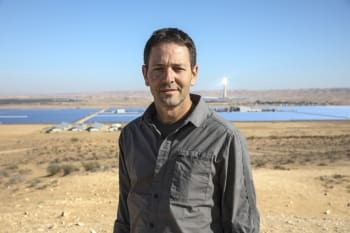 Eran Doron, head of Ramat Negev Regional Council Photo: Ofer Vaknin
Eran Doron, head of Ramat Negev Regional Council Photo: Ofer Vaknin
A few weeks ago, the CEO of the Environmental Protection Department, Guy Samet, sent a letter to the Deputy Director General of the Prime Minister's office, Ronen Peretz, and offered to close the refineries in Haifa and evacuate the pollutants from Haifa Bay to 2030. He noted in his letter that "the Environmental protection Ministry supports the evacuation of the petrochemical and chemical compound in Haifa Bay, including the refinery, Gadb, the northern land compound and a fertilizers compound up to 2030 in a gradual and closely monitored manner of evacuation."
"Will contribute to the creation of thousands of jobs in the Negev"
The local council of Yeruham, Tal Ohana, said: "I have only heard of the plan recently, and we have not been deeply exposed to the environmental and health influences that involve it." We would ask to learn the meanings of the program on its surroundings and Yeruham before the discussion. Alongside this, I welcome the Ramat Negev Regional Council for the economic development of the region and local authorities in the vicinity, and I am sure Yeruham will enjoy it too. Creating thousands of jobs in the Negev, high wages is a worthy initiative.
The mayor of Dimona, Bnei Bitton, said that "as a part of the Negev Development Authority, my job is to bring quality employment to the Negev region." The Oron industrial complex is an opportunity to blow the wilderness with hundreds of workplaces to follow. Unlike Haifa, the factories are located in the heart of the bay near the city and residents, where the industrial zone is situated in a crater, far enough for the infection to not reach us.
The National Council of Economics has said that, "from various works carried out on the subject, there are industries in the Gulf of Haifa that can be copied to other areas in Israel and, on the other hand, there are industries that have no economic feasibility to be repaired to a new location." The subject is currently on the exam in intra-governmental discussions.



